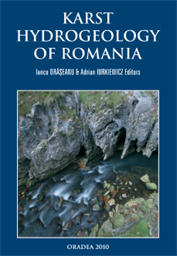Hidrogeologia Carstului din Romania

Avant-propos Editors. Table of contents
Chapter 1. Carbonate deposits in Romania. Hydrogeological regional classification of the karst
Chapter 2. Short history of the hydrogeological investigations of the karst in Romania
Chapter 3. Hydrogeological conditions of the karst areas
3.6. Parâng and Căpăţânii Mountains
3.8. Jiul de Vest-Cernisoara Basins (Fig.1)
3.9. Southern Vâlcan Mountains
3.10. Mehedinţi Mountains and Plateau
3.11. Banat Mountains (Reşiţa-Moldova Nouă Sinclinorium)
3.12. Poiana Ruscă Mountains (Fig.1.Eastern... si Fig.2.Western...)
3.13.1. Apuseni Mountains. The Physiographic, Geological-Structural and Hydrogeological Setting (Fig.1.5 si Fig.1.6)
3.13.2. Pădurea Craiului Mountains
3.13.3. Bihor Vlădeasa Mountains (Fig.3.1)
3.13.4. Codru Moma Mountains. Călugări ebb and flow spring (Fig.4.1 si Fig.4.2)
3.13.7. Rapolt Cystalline Limestones Outcrop
3.13.8. Upper Watershed of Geoagiu River (The Metaliferi Mountains)
3.13.9. Bujorul Ebb and Flow Spring
3.13.10. Conclusions and Acknowledgement
3.14. Ponor Plateau (South-Eastern Plopiş Mountains)
3.15. Cuciulat-Purcăreţ-Boiu Mare Karst Area, Northern part of the Someş Plateau
4. Chapter 4. Karstic terrains and thermomineral waters
4.1. Thermo-Mineral Waters from the Cerna Valley Basin
4.2. Geochemistry of the Sulfide Meso-Thermal Groundwater Complex at Mangalia
4.3. Stâna de Vale, a Laboratory for Still Waters (The Vlădeasa Massif)
4.4. Thermal Aquifers in Mesozoic Limestones from Oradea-Băile Felix 1 Mai Area, Western Romania
4.5. The Carbonate Hydrothermal Reservoir from Moneasa (The Codru Moma Mountains)